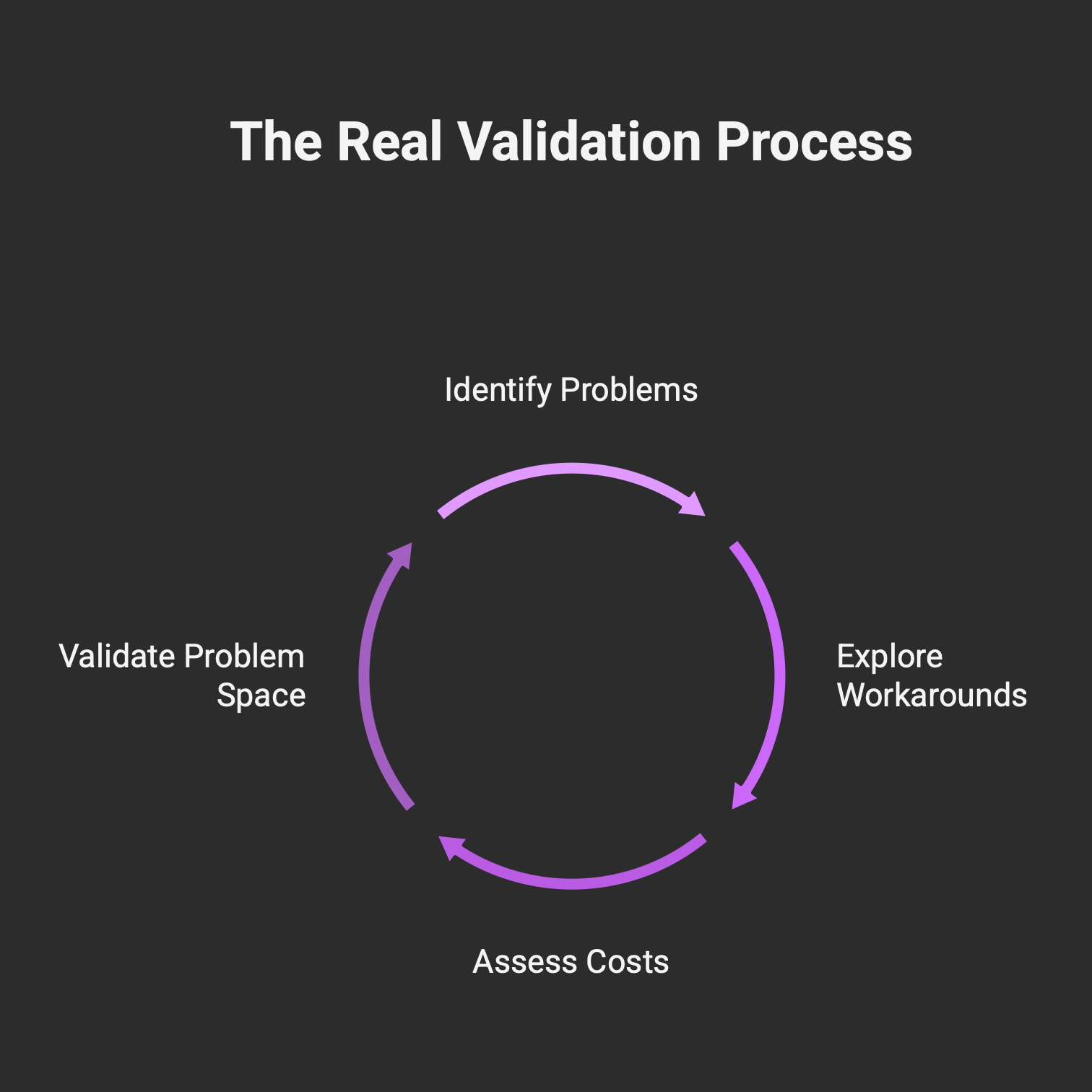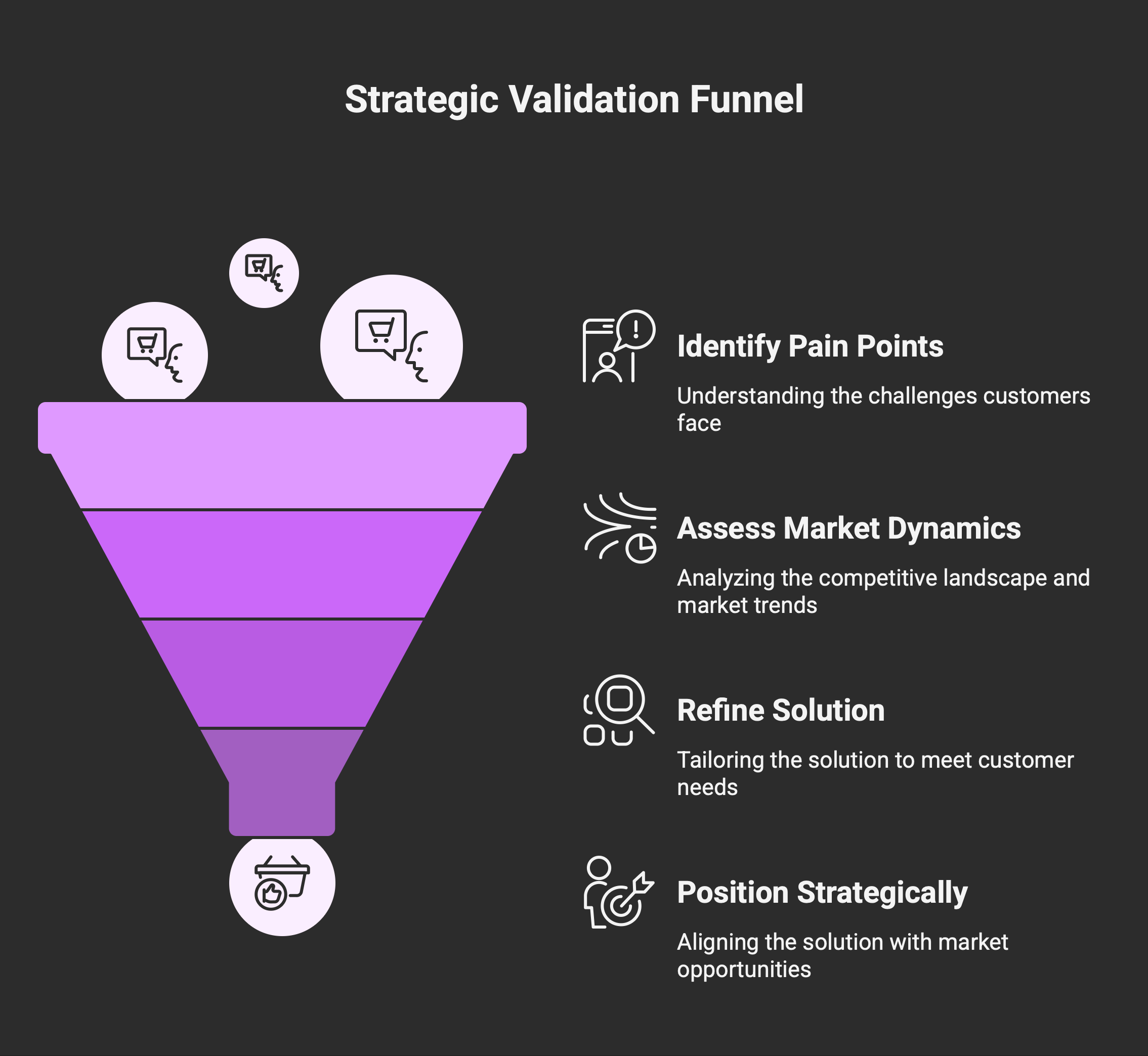The $290K Lesson: Why "Sell Before Build" Isn't Just Startup Advice (It's a Survival Strategy)
Don't build before validating. Sell first, learn the real problems, then build what people need, not what you imagine.

Picture this: You've got the perfect technical solution. The APIs are humming, the architecture is elegant, and your code is poetry in motion. You're so confident in your creation that you can practically taste the revenue coming in. Then reality hits like a freight train carrying rejection letters.
I've been there. We had what seemed like the holy grail: a perfectly matched underlying API, ready to go. We only needed to build the frontend and plug everything together to capture workflows and streamline operations. It felt like finding a twenty-dollar bill on the sidewalk.
Except that twenty turned out to be Monopoly money.
The "perfect" API wasn't unified at all. It was a Frankenstein's monster of hardwired, manually created connections between individual repositories. However, here's the kicker: we excelled at what we did. We started selling, got our first product ready, and felt like we were crushing it. Then we ran face-first into the wall that kills most startups: we never asked if the market was ready for what we built.
The Framework That Could Have Saved Us Months
Recently, I came across an 18-step guide from someone running a $290K monthly automation community. While some points seemed obvious, one principle hit differently: "Sell before you build." Not because it's revolutionary advice, but because it exposes a fundamental flaw in how we approach product development. Most of us treat validation like a box to check rather than the foundation everything else builds. We talk to a few people, get some nods of approval, and convince ourselves we've done our homework. But real validation isn't about confirming our preconceptions. It's about confronting them.
The Real Validation Process
Here's what I learned the hard way: validation isn't just about whether people will buy your solution. It's about understanding the complete ecosystem of problems, workarounds, and pain points that exist in their daily reality. When you truly validate, you're not asking "Do you like my idea?" You're digging into questions like:
- What's the current cost of this problem (time, money, frustration)?
- What have you already tried to solve it?
- Where do those solutions fall short?
How much of your day gets consumed by workarounds?
The magic happens when you stop trying to sell your solution and start becoming genuinely curious about their world. You're not validating your product; you're validating the problem space.

Why "Sell Before Build" Actually Works
The framework from that automation community makes perfect sense when you understand the psychology behind it. When you sell first, you're forced to articulate value before you get distracted by features. You can't hide behind elegant code or impressive technical specifications.
Consider these insights from their approach:
- "You don't need a website or business card" — This isn't about being scrappy. It's about focusing on conversations instead of cosmetics. Your first ten customers care about outcomes, not polish.
- "Business equals reps, not tools" — Every conversation teaches you something new about the problem space. Tools scale processes, but only after you've figured out what process works.
- "Win the call with outcomes, not process" — Nobody cares about your methodology. They care about what changes in their life after they pay you.
The pattern here isn't about sales tactics. It's about forcing yourself to understand value creation before you get lost in value delivery.
The Market Readiness Question
This brings us to the question that almost killed our startup: Is the market ready?
Market readiness isn't just about demand. It's about timing, infrastructure, and the ecosystem of supporting tools and processes that need to exist for your solution to make sense. We had demand. People wanted our solution. But the underlying systems, integrations, and workflows that would make our product truly valuable weren't mature enough. We were selling a Ferrari to people still building roads.
The brutal truth? Sometimes the best product decision is waiting. Not because your solution isn't good, but because the market infrastructure isn't ready to support it.
From Preconceptions to Reality
The real process should be: validate, reconsider your preconceptions, sell, build, then promote. Notice that "reconsider your preconceptions" step. That's where most founders stumble. We're so in love with our solutions that we interpret every conversation through the lens of confirmation bias. Someone mentions a related problem, and we hear validation. Someone expresses frustration with current tools, and we hear an opportunity.
But real validation requires intellectual humility. You have to be willing to discover that your brilliant solution might be solving the wrong problem, or the right problem at the wrong time, or for the wrong people.
The Competitive Advantage of Going Slow
Here's the counterintuitive insight: going slow in validation accelerates everything else. When you truly understand the problem space, building becomes more focused, selling becomes more confident, and scaling becomes more predictable. The automation community's approach of "manual equals leverage" captures this perfectly. Do things manually first. Understand every step, every friction point, every moment of frustration or delight. Only then do you build systems to scale what already works.
This isn't about being inefficient. It's about being effective first, then efficient.
The Strategic Mindset Shift
The difference between founders who scale and those who struggle often comes down to this: successful founders see validation as strategy, not tactics. They're not just checking if people will buy their product. They're mapping the entire landscape of customer needs, market dynamics, and competitive positioning. When you approach validation strategically, every conversation becomes market research. Every rejection becomes data. Every "not now" becomes insight into timing and positioning. Making It Practical
So, how do you implement "sell before build"? Start with these questions:
- What's the smallest version of your solution that someone would pay for tomorrow?
- Who's currently paying the highest cost for not having this solution?
- What would need to change in their world for your solution to become essential rather than nice-to-have?
Then go find those people and start conversations. Not pitches. Conversations.
The goal isn't to convince them they need your solution. It's to understand their world deeply enough that when you do build something, it feels inevitable rather than innovative.

The Long Game
Building successful products isn't about having the best ideas. It's about having the most accurate understanding of problems worth solving. And that understanding only comes from patient, curious, ego-free conversations with the people who live with those problems every day.
The next time you're tempted to build first and sell later, remember: the market doesn't care about your elegant solution. It cares about its messy problems. Start there.
Stay Raw | Stay Real | Stay Intense.
